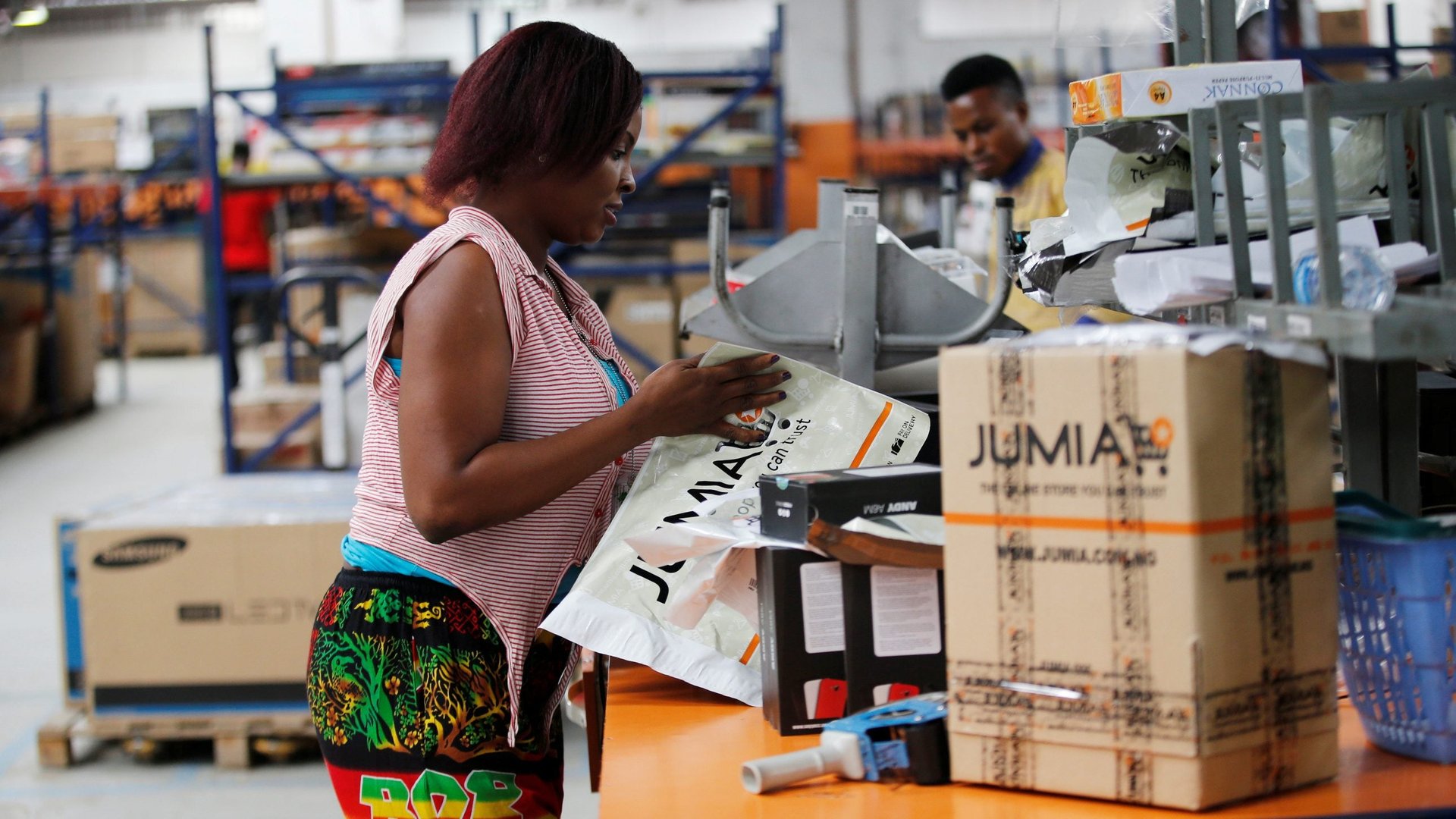Jumia’s average order size is falling because of a change in strategy
One highlight of Jumia’s third quarter earnings report, released on Nov.16, is that the volume of fast-moving consumer goods the company sold nearly doubled over the past year, while food delivery grew by over 40%.


One highlight of Jumia’s third quarter earnings report, released on Nov.16, is that the volume of fast-moving consumer goods the company sold nearly doubled over the past year, while food delivery grew by over 40%.
It underscores Jumia’s shift to sell more groceries and other essentials that users order more frequently, away from previous flagship items like phones and electronics whose availability has been disrupted over the past year by ongoing global supply chain crises.
Between the third quarters of 2020 and 2021, the African ecommerce leader gained 500,000 active customers which led to 1.9 million more orders within the period. The dollar value of the company’s all-time quarterly record of 8.5 million orders in this year’s third quarter was 8% more than the same period in 2020. Revenue for the quarter also grew 8.5% year-on-year.
But while the latest report confirms Jumia is in a better place than during the pandemic because more people are buying on the company’s websites than ever before, it raises questions about the company’s plan for profitability since customers are spending increasingly fewer dollars per order.
Jumia’s inventory problem remains
The average value of a Jumia sale has been falling since the company went public, from $41.50 in 2019’s third quarter to $28 this year. It is calculated by dividing the total value of all goods sold (the gross merchandise value, or GMV) by the number of orders fulfilled.
Jumia’s key problem remains that GMV has not kept pace with consistent customer growth. The $238 million recorded in yesterday’s report is over $50 million less than in the same period in 2019, before the pandemic. On average, customers still make an average of one order per quarter.
There is at least an implicit suggestion in there that the much-hoped-for boom in African ecommerce has yet to materialize, due to unresolved challenges on infrastructure—like better roads that should open up more suburban communities outside Africa’s major cities—but also macroeconomic pressures like inflation that reduce spending power.
And to be sure, even a $28 average order value doesn’t give the fullest picture of how much Jumia users are spending. Because averages can be skewed upwards by large outliers, it could well be that most orders on Jumia are worth less than $28. If that is the case, a record number of orders—as it achieved in the latest quarter—would not mean much unless it somehow leads to more orders, perhaps by exposing customers to their need for complementary products with high value.
Going big on marketing and logistics
That explains why Jumia has ramped up ads on YouTube, radio, and television across the 11 countries it operates in. Sales and advertising spend grew from $17 million between April and June to $24 million last quarter.
More importantly, the company is becoming more cost efficient in its ability to fulfill the surge of orders it hopes to get from spending big on ads. Between 2019 and now, the amount Jumia spends in fulfilling an order went down from $3.3 to $2.6, and it’s yielding positive return: Jumia made a gross profit of $1.4 million last quarter after fulfillment expense (thought that’s before adding what it spent on consumer incentives.)
The market was not impressed
In addition to marketing, the company also plans to spend more on technology going forward. But analysts will watch to see how these costs reflect on the company’s final bottom line.
At $64 million, Jumia third quarter operating losses were higher than in any other year since it became a public company. Regardless of customer growth and future promises, losses continue to influence how investors judge Jumia’s value. At the close of business on Nov. 16, Jumia’s stock had fallen to $14.96 from $18.52 a day before and nearly 80% less than its $65 all-time high in February.
Sign up to the Quartz Africa Weekly Brief here for news and analysis on African business, tech, and innovation in your inbox.